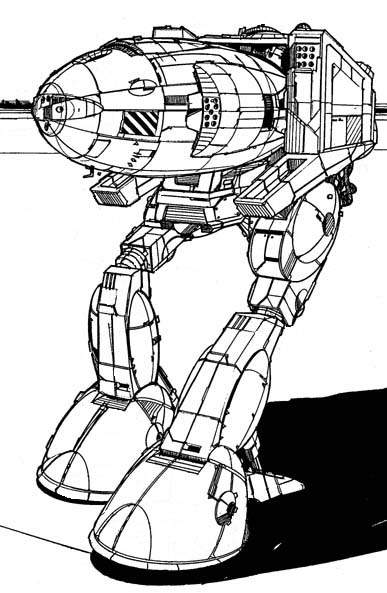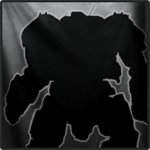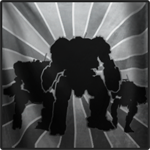
Leg Joints
#1
Posted 01 January 2015 - 08:27 AM
Pros and Cons between Human joint legs and Chicken joint legs?
Basically, Catapult legs vs Atlas legs.
#2
Posted 01 January 2015 - 08:29 AM
#3
Posted 01 January 2015 - 10:48 AM
#4
Posted 01 January 2015 - 10:49 AM
#5
Posted 01 January 2015 - 12:03 PM
#6
Posted 01 January 2015 - 12:07 PM
You can also get lower to the ground easier.
Though humanoid legs are much easier to build effectively and are far less complex.
#8
Posted 01 January 2015 - 06:55 PM
#10
Posted 01 January 2015 - 07:04 PM
Reverse-joint legs are better for speed (sometimes), depending on the number of legs and type of gait.
#11
Posted 01 January 2015 - 07:12 PM
 YueFei, on 01 January 2015 - 06:55 PM, said:
YueFei, on 01 January 2015 - 06:55 PM, said:
And better at climbing rough terrain. Lateral movement and transverse movement as well. Birds usually hop to turn...
Standing upright allowed better vision and better vocal communication over distance.
Human legs FTW!
#12
Posted 01 January 2015 - 07:15 PM
 Shiroi Tsuki, on 01 January 2015 - 08:27 AM, said:
Shiroi Tsuki, on 01 January 2015 - 08:27 AM, said:
Pros and Cons between Human joint legs and Chicken joint legs?
Basically, Catapult legs vs Atlas legs.
It's mostly aesthetics, and the mistaken notion that reverse-joint legs would somehow inherit the advantages of digitigrade legs seen in nature (see ostriches) over plantigrade legs (see humans & human gait).
In practice, the reverse-joint 'Mechs (e.g. Catapult, Mad Cat, etc) are actually plantigrades (that is, they stand & walk on the foot rather than "on its toes").
In reality, the "classic" semi-crouching reverse-joint design (see old BT/MW art) is actually an unwise design choice from a robotics design standpoint; for it to actually work well, the weight bearing servos to be aligned such that the weight of the finished unit in a standing position is directed vertically through them (see here, here, and here).
Quote
Mechwarrior and other mecha genres have polluted our minds with reverse knee walkers. Sure it looks pretty cool for them to have a huge angle in the knee bend, but it's far from efficient. The only bonus to it is that it lowers your COG. Ideally, you want all of your weight bearing servos to be aligned somewhat like this:

In other words: for the Mad Cat et al to actually work, they would necessarily have to have the more upright posture that PGI gave them in MWO (rather than the crouched stance often seen in classic BattleTech artwork), and all of the calls from some players to have the MWO reverse-joint 'Mechs be have a more crouched/squatting stance (which puts the joints & servos out of alignment) actually represents the "wrong" way to do it.
#13
Posted 01 January 2015 - 07:18 PM
#14
Posted 01 January 2015 - 08:06 PM
 Strum Wealh, on 01 January 2015 - 07:15 PM, said:
Strum Wealh, on 01 January 2015 - 07:15 PM, said:
In practice, the reverse-joint 'Mechs (e.g. Catapult, Mad Cat, etc) are actually plantigrades (that is, they stand & walk on the foot rather than "on its toes").
In reality, the "classic" semi-crouching reverse-joint design (see old BT/MW art) is actually an unwise design choice from a robotics design standpoint; for it to actually work well, the weight bearing servos to be aligned such that the weight of the finished unit in a standing position is directed vertically through them (see here, here, and here).
In other words: for the Mad Cat et al to actually work, they would necessarily have to have the more upright posture that PGI gave them in MWO (rather than the crouched stance often seen in classic BattleTech artwork), and all of the calls from some players to have the MWO reverse-joint 'Mechs be have a more crouched/squatting stance (which puts the joints & servos out of alignment) actually represents the "wrong" way to do it.
Thankie~!
It seems like you know what you're talking about. What would be the ideal leg design for a Mech then? (Something as huge and heavy as a Shadowcat) I'm mainly look at low profile, and stability after one of the legs has stepped on an AT mine
#15
Posted 01 January 2015 - 09:32 PM
 Shiroi Tsuki, on 01 January 2015 - 08:06 PM, said:
Shiroi Tsuki, on 01 January 2015 - 08:06 PM, said:
Thankie~!
It seems like you know what you're talking about. What would be the ideal leg design for a Mech then? (Something as huge and heavy as a Shadowcat) I'm mainly look at low profile, and stability after one of the legs has stepped on an AT mine
The post I quoted wasn't from me, but I understood enough of what the people in that thread were talking about to see that it related to this one.
Like that guy said, which way the knees bend doesn't really matter that much, but the important thing is how the loads are placed on the servos & the leg members - specifically, that the center-of-gravity ("CG") is (more-or-less) inline with the main load-bearing servos (that is, where the major joints - the hips, knees, and ankles are located).
One of the other guys on that thread - the one who was actually building the reverse-joint walker that spawned that discussion - came to the came conclusion.
Quote
(source)
Quote
(source)
The conclusion from those discussions is that regardless of the knee direction, the biped has to be relatively straight-legged with the CG being (more-or-less) in-line with the hips (..."the weight needs to be OVER the HIPS, not in front of them"...) and knee joints when standing & walking, OR the leg actuators would need to be substantially overbuilt & overpowered (which makes its movements inefficient, makes the unit unnecessarily expensive, and would dramatically & unnecessarily force additional wear - and additional maintenance-related downtime - on the unit's legs) if the desired default position is more crouched/squatty.
This can also be seen in bipedal true digitigrades (such as ostriches, where what most people think is the reverse-joint knee is actually the ankle, anyway

In other words, 'Mechs that take the knees too far out-of-line (like the original Mad Cat and Vulture artwork, among others) or take the hips too far away from the CG (like the original King Crab and Stalker artwork) would barely be able to walk more than a few steps without falling over, much less be able to move at any significant speed.
#16
Posted 01 January 2015 - 09:55 PM
 FupDup, on 01 January 2015 - 10:49 AM, said:
FupDup, on 01 January 2015 - 10:49 AM, said:
To be honest, the Stalker should have had human like legs, but were changed (for the better I believe) to the chicken walker we know in MW:O.
#17
Posted 01 January 2015 - 09:59 PM
 Shiroi Tsuki, on 01 January 2015 - 08:06 PM, said:
Shiroi Tsuki, on 01 January 2015 - 08:06 PM, said:
It seems like you know what you're talking about. What would be the ideal leg design for a Mech then? (Something as huge and heavy as a Shadowcat) I'm mainly look at low profile, and stability after one of the legs has stepped on an AT mine
Sturm posted the correct diagram to show that our battletech legs aren't quite the same as what appears in nature.
In reality, the optimum leg design for something like a shadowcat is probably tank treads. But, if we are going for reality, battlemechs in general are a terrible idea. Despite the special "ablative armor," a 120mm sabot round will punch through one of these things no problem, and there goes your billion dollar robot. I am guessing that future warfare will focus on smaller delivery systems in larger quantities with more powerful weapons (once stealth becomes negated by aerosolized network sensors that are so ubiquitous as to be a significant fraction of the air we breathe).
It's always easier to blow something up than to armor it against destruction.
#18
Posted 01 January 2015 - 10:01 PM
Makes me sad.
#19
Posted 01 January 2015 - 10:04 PM
 Davers, on 01 January 2015 - 09:55 PM, said:
Davers, on 01 January 2015 - 09:55 PM, said:
The TRO art of the Stalker was pretty horrible.

Chicken legs look like 10000000000% better with that type of torso shape.
#20
Posted 01 January 2015 - 10:12 PM
 Dino Might, on 01 January 2015 - 09:59 PM, said:
Dino Might, on 01 January 2015 - 09:59 PM, said:
Sturm posted the correct diagram to show that our battletech legs aren't quite the same as what appears in nature.
In reality, the optimum leg design for something like a shadowcat is probably tank treads. But, if we are going for reality, battlemechs in general are a terrible idea. Despite the special "ablative armor," a 120mm sabot round will punch through one of these things no problem, and there goes your billion dollar robot. I am guessing that future warfare will focus on smaller delivery systems in larger quantities with more powerful weapons (once stealth becomes negated by aerosolized network sensors that are so ubiquitous as to be a significant fraction of the air we breathe).
It's always easier to blow something up than to armor it against destruction.
Agreed. Mechs probably won't be the things we use to fight wars in the future. But I want to design one anyway!
1 user(s) are reading this topic
0 members, 1 guests, 0 anonymous users



































